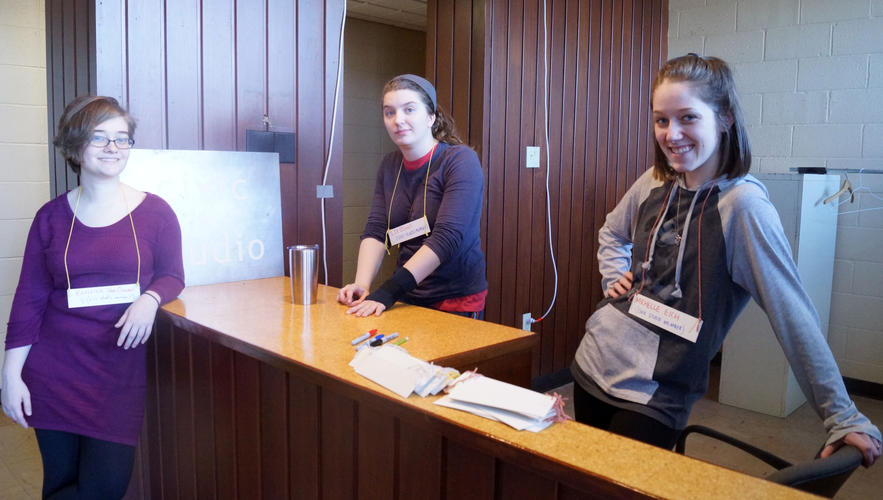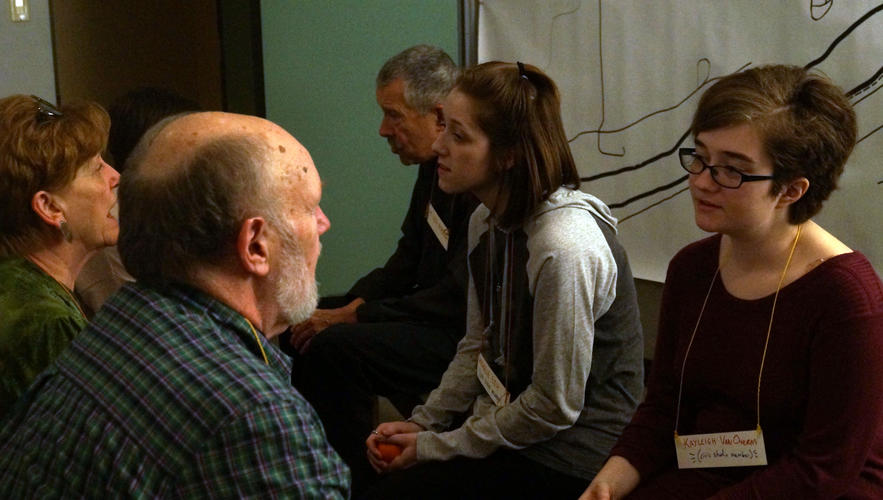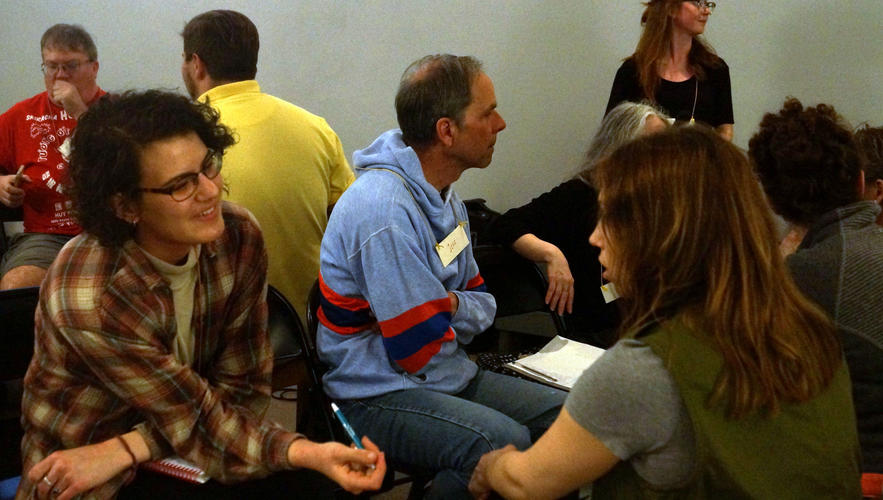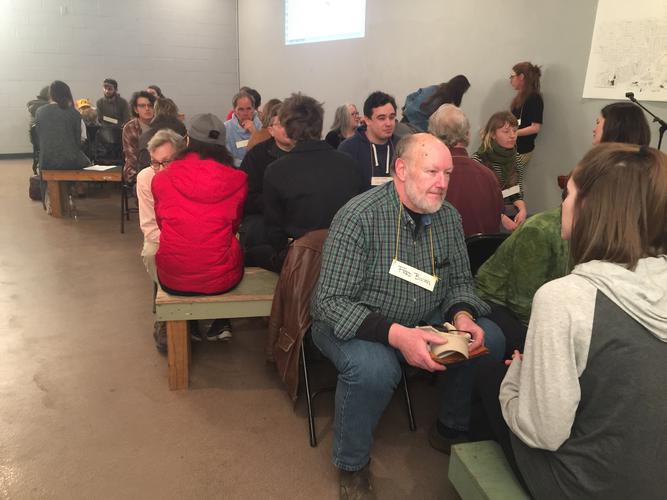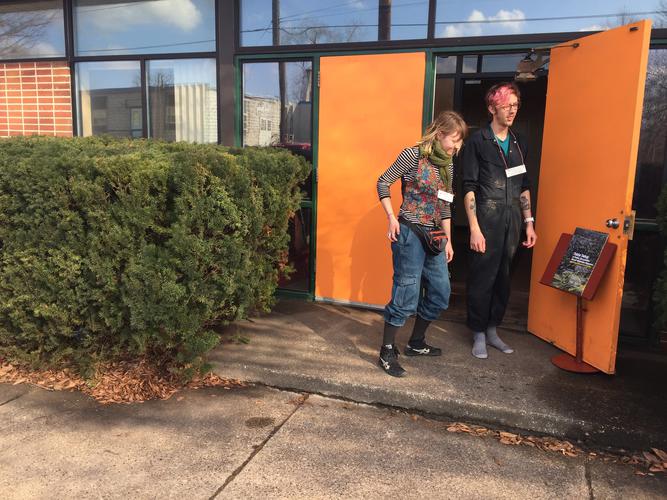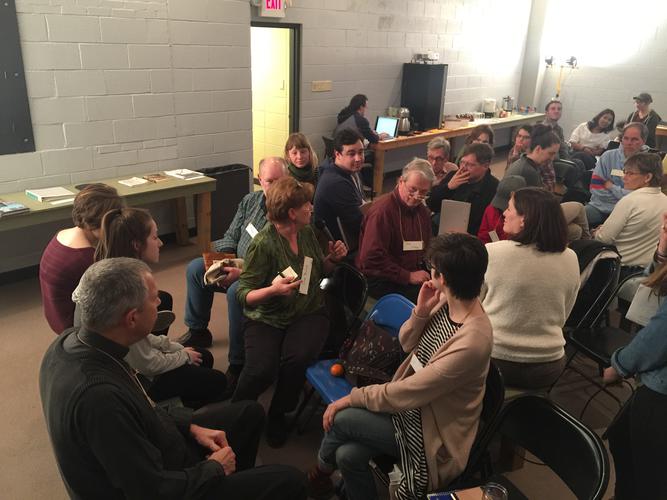Liminal Dissonance
2017
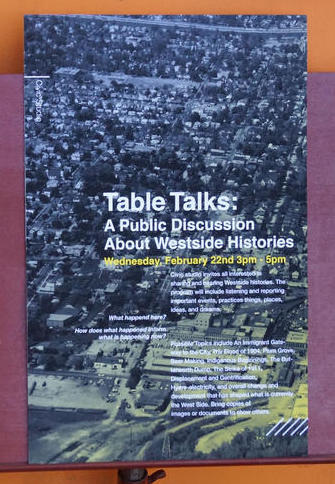
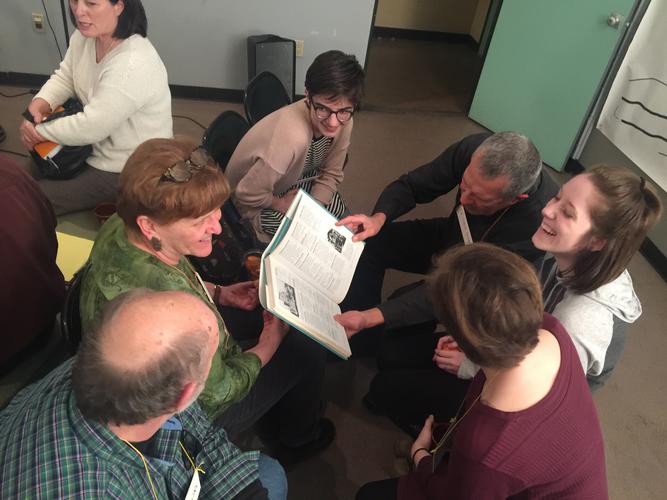
Table Talks
February 22, 2017A Public Discussion about Westside Histories
Wednesday, February 22nd 3pm - 5pm
Civic studio invited all interested in sharing and hearing Westside histories. Approximately 30 individuals from the community were in attendance for this public discussion. The program consisted of intermittent “rounds” of intimate conversations with participants and reflecting major talking points back to the entire group.
Highlights from the discussion includes
- The history of the West Side as being politically and culturally divided from the rest of the city; the West Side has been a working class area which has fostered considerable antipathy towards the 'rich white ruling class' represented by Heritage Hill and elsewhere; affinity with the NE side working class as well
- Early 20th century: remapping of the city wards & politics regarding city / ward commissioners
- 1916 Charter: city manager, "clean government" - taking political power away from minority + working class groups
- Haney factory + families of other wealthy West Side manufacturers lived in mansions
- Surveys of the needs of West Side residents in the 1970s found that many residents were possibly too proud of where they lived to state that their area needed help, directed surveyors to other areas that they viewed as more in need of help than their own area
- The possibility of remapping of the wards to more accurately reflect the needs of the people rather than the needs of businesses
- "Mixed-income neighborhoods" - ~15-year old study on the subject found that the West Side north of John Ball Park was found to have the broadest range of income + racial diversity
- Division between who works and who is supported by social programs can be as clear cut as being represented by different sides of the street
- John Ball was very invested in getting populations from Europe to move to Grand Rapids
- Plum Grove - intersection of colonial and indigenous histories - investigating and developing the latter
The intimacy and dynamicism of the program allowed for Civic Studio members to connect and engage with various Grand Rapids residents over issues such as gentrification, displacement, and forgotten histories. The sharing of stories, observations, and concerns in a public platform fostered a sense of mutuality oer the West Side’s past, present, and future
